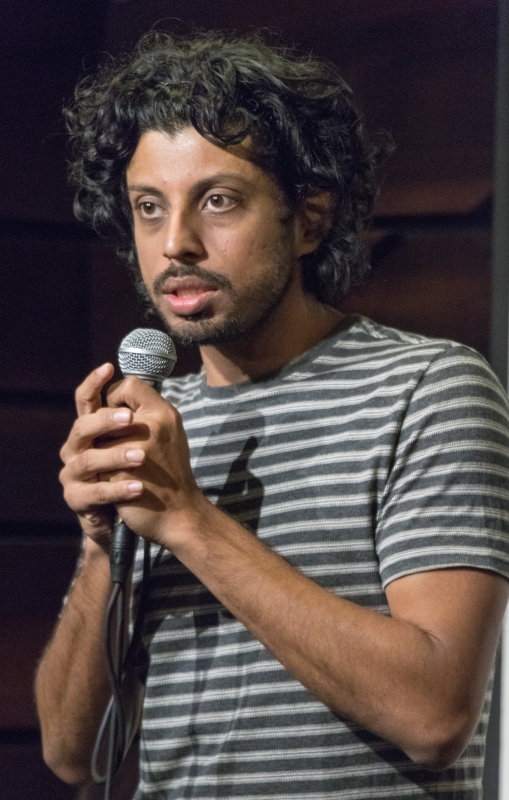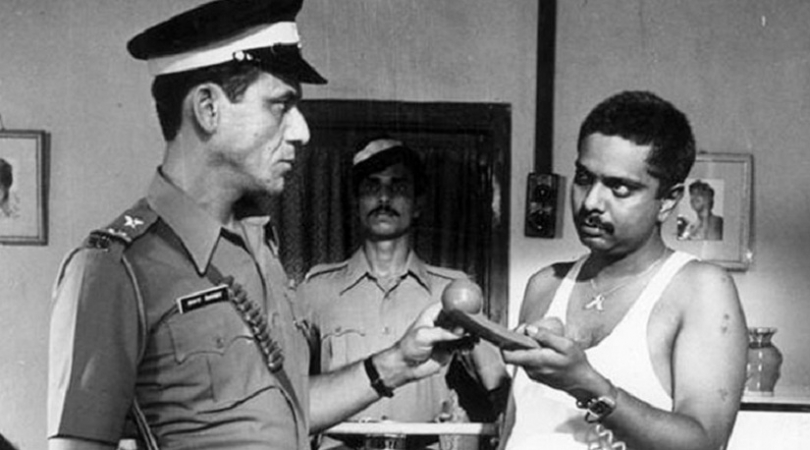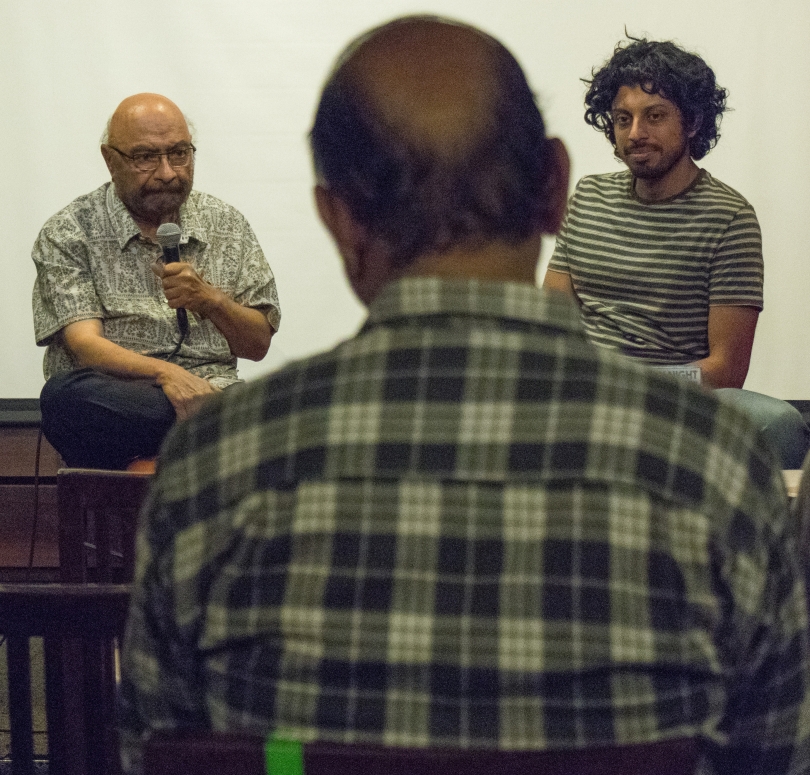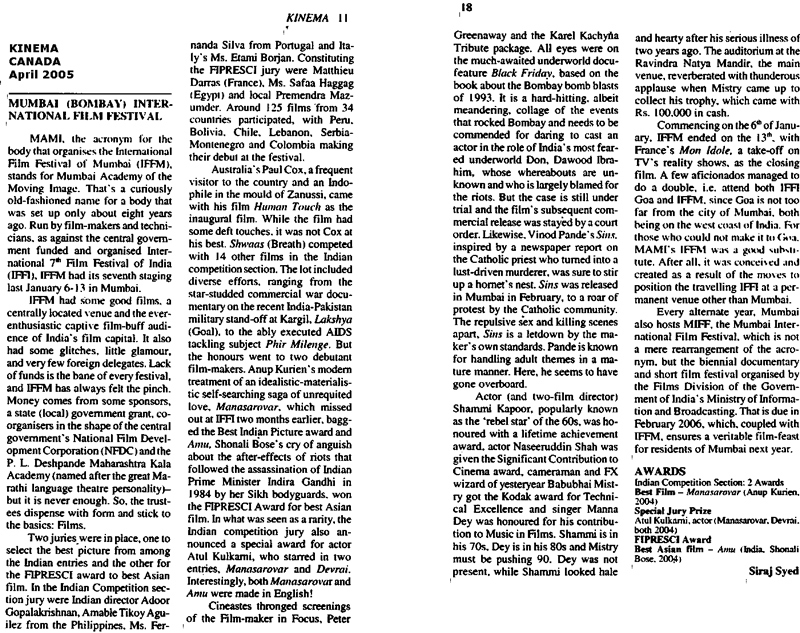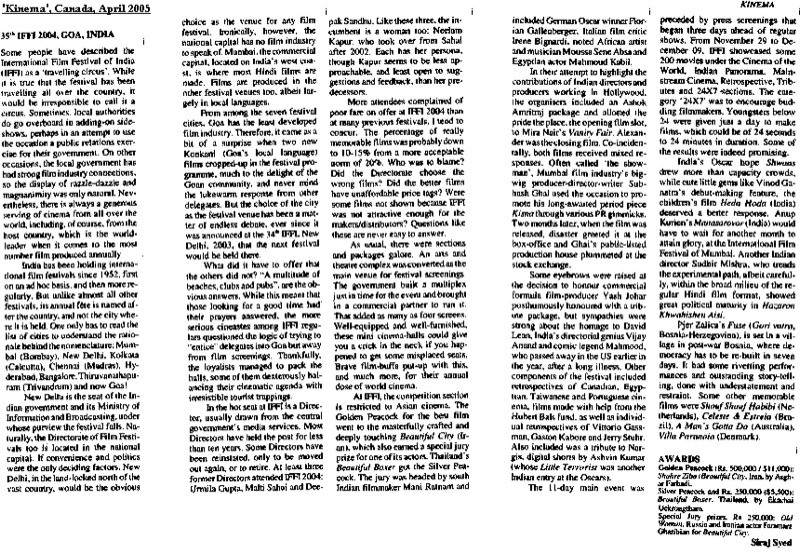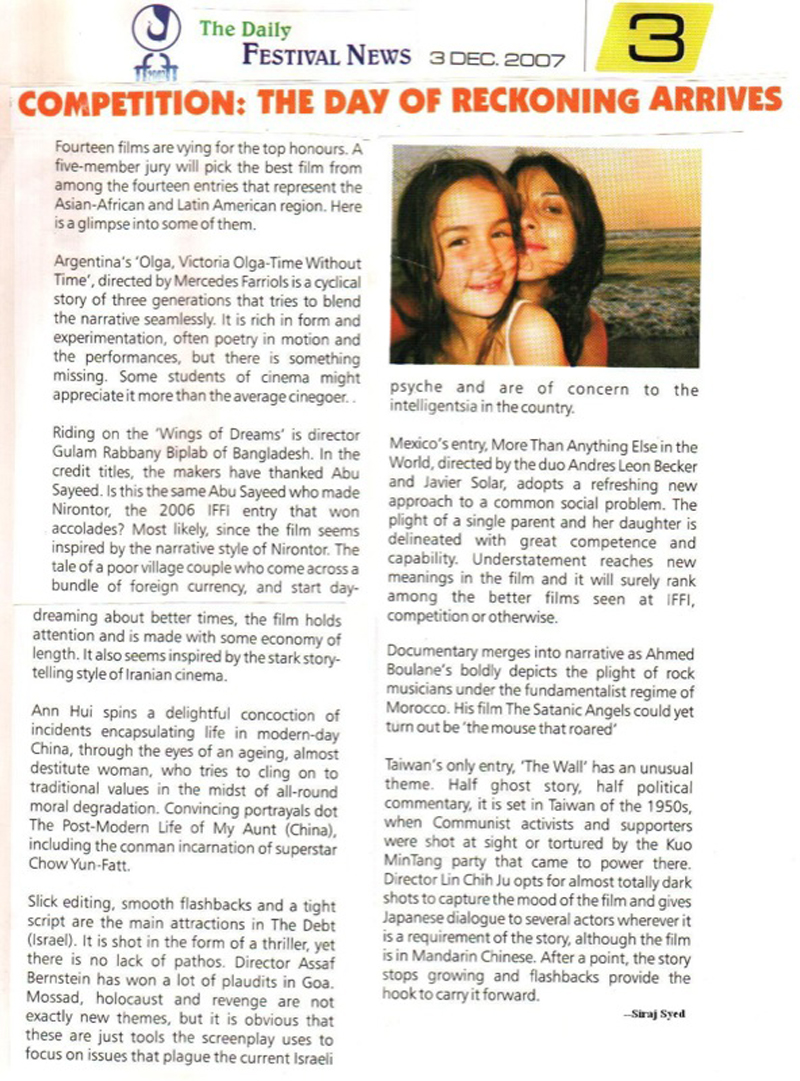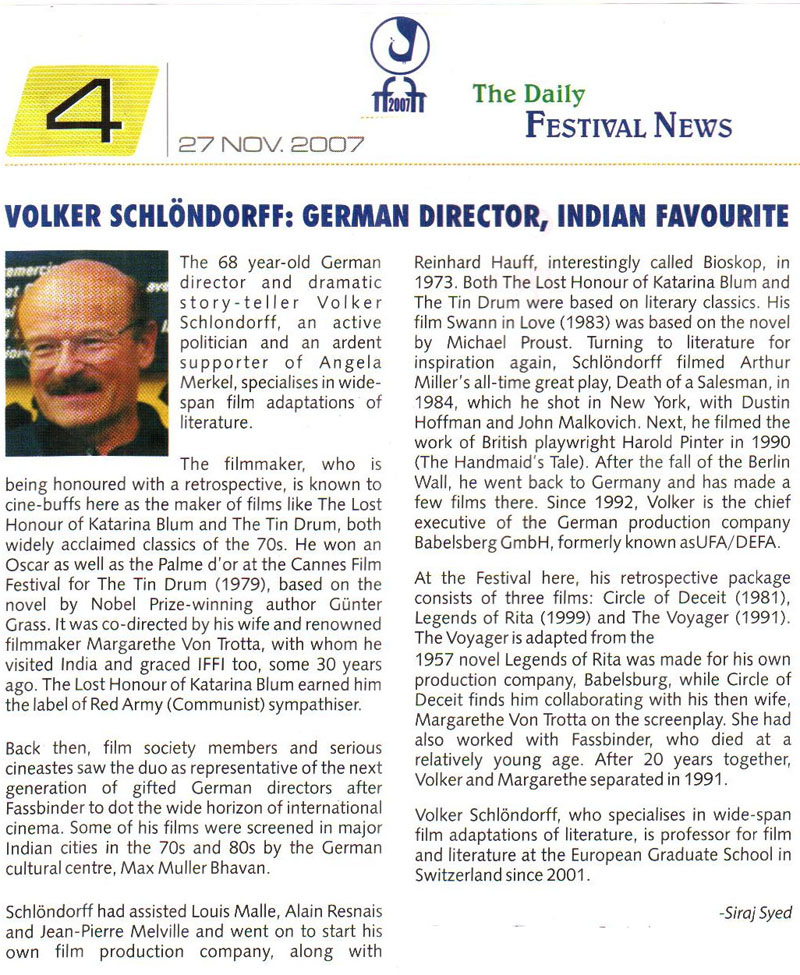|
|
||
|
Pro Tools
FILMFESTIVALS | 24/7 world wide coverageWelcome ! Enjoy the best of both worlds: Film & Festival News, exploring the best of the film festivals community. Launched in 1995, relentlessly connecting films to festivals, documenting and promoting festivals worldwide. Working on an upgrade soon. For collaboration, editorial contributions, or publicity, please send us an email here. User login |
Ardh Satya: Govind Nihalani revisits the time of half-truth
Ardh Satya: Govind Nihalani revisits the time of half-truth Many things were happening in Indian cinema during the early 1980s. The National Film Development Corporation (NFDC) was financing and producing/co-producing unconventional, art-house, parallel cinema films, but also the rip roaring comedy Jaane Bhi Do Yaaro and the blockbuster, Gandhi. A theatre like Prithvi, set-up by the husband and wife duo of Shashi and Jennifer Kapoor in Mumbai, was becoming the hub of all drama activity, and providing a platform to aspiring actors, to showcase their talent. A lot of attempts were made by reputed directors at offering meaningful cinema, but most of them failed to deliver. 1983 was the year when Shyam Benegal’s Aarohan, one of his less known films, was released. While Aarohan wasn’t memorable, his Mandi was a milestone. Hrishikesh Mukherjee’s magic failed in both his 1983 releases, Achha Bura and Rang Birangi. Sunil Dutt made a surprisingly different kind of film, called Dard Ka Rishta, which had Smita Patil in its cast, and was an inspiring story. Gulzar’s erstwhile assistant, Meraj, tried his hand at comedy, in an outing called Dhat Tere Ki, but success eluded him. Basu Chatterji came up with Pasand Apni Apni, which was not among audiences’ favourites. BhimSain returned with Tum Laut Aao, to lukewarm reception. And then there was Govind Nihalani, with a film that was to carve his name in history: Ardh Satya (Half-Truth).
At its regular White Wall screening and interaction session on Sunday, 10 March, 2019, at The Habitat, in Khar, Mumbai, Pratik Rajen Kothari invited Govind Nihalani to look back upon the film he had made 36 years ago, and have a Question and Answer session with a small but discerning audience. When he was planning Ardh Satya, he was already a name to reckon with, sharing the Golden Peacock for the best feature film of 1980 at the National Film Awards, for Aakrosh, his compelling debut. Although Vijeta was released first, it appeared from the discussion that Ardh Satya was planned and shot earlier. “My friend, Vijay Tendulkar, the noted playwright, gave me a book of short stories in Marathi, written by S.D. Panwalkar, which contained one impactful tale called Surya. That story became the skeleton of the film that was to take shape as Ardh Satya,” revealed Nihalani. On the choice of the title, he said that there were long deliberations but no title met his concept. He needed something that was not complete. Like in the film, struggles against the system can never end. There is no resolution. “So, one day, Satyadev Dubey (playwright and director, and mentor to many an actor who might have made it big in the Hindi film industry) said to me that he will give me a title if I paid him five hundred rupees (a decent amount in 1982). I agreed, and he came-up with Ardh Satya. Something clicked in my head and I gave him five hundred rupees immediately.” “Only one chapter in the story is from Panwalkar’s book—that a retired, corrupt policeman, who beats his wife, forces his son to join the police against his will, so that he can live on graft, luxuries and pension all his life, but the son rebels—all the rest is the work of Vijay Tendulkar. (Hindi dialogues were written by Vasant Dev). We have also used a Dilip Chitre poem,” revealed Nihalani. Was it true that you had shot two endings for the film? Queried a member of the audience. “Yes,” confirmed Nihalani. “In Tendulkar’s original script, Smita Patil goes to visit Om Puri, and finds him dead. The film ended there. The cause of death was not revealed. It could be interpreted as suicide, stress or murder. I was not too happy with this. There were too many failures in the film, and the system always won. I wanted my protagonist to win at least one battle: he should kill the villain (Sadashiv Amrapurkar). That would not break the system in any way, but at least there would be some sense of justice, some positive action amidst so much negativity. So I humbly requested Tendulkar, whom I revered, to let me shoot two endings. I told him to see both, and then decide which one worked better. To my relief, he liked my version better, and that is what was released.”
Giving his cast due credit, he recalled, “We never rehearsed. Readings, yes, rehearsals, no. Reading with emotion, emoting with the words, not actions. Yet, when the shots were taken, the actors delivered their best. And what a capable cast we had: Om Puri (the lead, Sub-Inspector Anant Velankar), Naseeruddin Shah (suspended Inspector Michael Lobo), Smita Patil (lecturer Jyotsna Gokhale), Amrish Puri (Anant’s father), Shafi Inamdar (Inspector Haider Ali) and Sadashiv Amrapurkar. None of them were stars at that time, but all had so much to give. Sadashiv was introduced in this film. He was recommended by Tendulkar, who had seen him in a Marathi play. I went to see the play, and was highly impressed. That is how he came to play Rama Shetty, the underworld don. But guess what role he had in the play? That of a buffoon police inspector! And yet I could see Rama Shetty in him.” Om Puri won the National Award for Best Actor for Ardh Satya, repeating the success he had achieved with Nihalani’s first film, Aakrosh. (Aakrosh, as well, had Naseer, Smita and Amrish. Om and Naseer were introduced to Govind by Girish Karnad while they were still studying at the Film and Television Institute of India). If Amitabh Bachchan had epitomised the angry young man as a police inspector who takes on crime bosses in Zanjeer, and refused Ardh Satya on account of his busy schedule, Ardh Satya’s Om Puri, with a frail physique and pock marks on his face, sets out to battle the system with limited or no success. No big fights, no songs, no dances, but tons of angst, most of it radiating from those mega-expressive eyes. “Ardh Satya is not about cops and criminals; it is about the system and victimisation. In my film, I chose to place it in the milieu of police and crime bosses, with a political nexus. It could easily be an honest man against the bureaucracy, or a simple man battling administration,” pointed out Nihalani. Om was just brilliant, caught between duty and imploding anger. Sadashiv became a top villain after Ardh Satya. Shafi Inamdar, who was cast as Om Puri’s boss in Ardh Satya, featured again in Nihalani’s Vijeta, and became a reputed actor very soon after Ardh Satya was released. Naseer and Smita were already established actors. Incidentally, Naseer was first considered for Om Puri’s role!
Nihalani praised editor Renu Saluja too, stating that she could share his vison easily, and once he had conveyed his thoughts to her, whatever he had shot would be assembled to his satisfaction. He did not have to go back and re-edit at all. When it came to music, he was inspired by Japanese instruments as used by the famous director Kenji Mizoguchi (Ugetsu Monogatari, The Story of the Last Chrysanthemums, The Life of Oharu, Sansho the Bailiff; Mizoguchi studied kabuki, noh, and traditional Japanese dance and music; he died in 1956). The kind of single strumming, producing short, pointed sounds, that he used, appealed to me very much. My music director, Ajit Verman, created similar sounds using the sarod. You see, the sarod has two distinct effects, the masculine and the feminine. We used both, as required.” One question was about the only token use of Marathi, though all the main characters Marathi. Explained Nihalani, “The film is set in cosmopolitan Bombay (now Mumbai), so the characters speaking Hindi is not too much of a liberty. Besides, Lobo is not a Marathi-speaking character, neither is Rama Shetty, so should we then have them speaking in Konkani and Tulu? I could have used much more Marathi, but, somehow, I did not feel the need. The characters still come across as Maharashtrians, though they speak very little Marathi. That is important.”
After nearly nine years of being away from film-making, Nihalani ventured into a 3D vehicle, Kamlu Happy Happy (2012), about a baby camel who wants to fly, which was followed by a five-year hiatus. Then came Ti Ani Itar (2012), his first Marathi film, adapted from a play. Asked why he never made a mainstream formula film, he declared, “I only make films that give me pleasure. I derived immense joy from all the films I have made. And I will not make a film that does not bring me joy.” (Actually Thakshak-1999 was quite mainstream, and so were DrohKaal-1994 and Dev-2004, to an extent). Is there an Ardh Satya sequel in the offing? “No,” clarifies Nihalani. When I was making Dev, Ardh Satya was at the back of my mind. Dev was neither a sequel nor a remake, but it had some elements that were common.” (Amitabh played the lead role of a Joint Police Commissioner in this film that had none other than Om Puri as a Special Commissioner and Amrish Puri as the Chief Minister. His earlier film DrohKaal, was about policemen and terrorists, with Naseeruddin Shah, Om Puri and Amrish Puri cast as police officers). Govind Nihalani, now 79, has won six National Awards, five for Best Film and one for Best Cinematographer. One member of the audience wanted to know whether the cinematographer in him had any kind of conflict with the director. He made it clear that there was absolutely no conflict. “During my education and early years as a cinematographer, I had the honour of working with personalities who believed in holistic thinking. Thus, when I conceive a project, I think of it holistically. Factors like lighting and cinematography are automatically integrated in the scenes as they come to my mind. Moreover, I repose great faith in my actors and let them prepare for their roles themselves. On the sets, I try to avoid giving too many directions.”
Answering a question posed by this writer, Govind Nihalani categorically stated, “I faced no problems with the Central Board of Film Certification (CBFC). Everybody liked the film. In fact, they said that I should have made it even more hard-hitting. Police Officers, whom we invited to special screenings, were all praise about the way in which Ardh Satya exposed corruption and the police-criminal-politician node, but would not be at liberty to say so publicly.” (The film was released with an A certificate, suitable for Adults only). It was a box office hit, making it one of the earliest parallel cinema films to crossover to a mainstream like box-office performance. Numerous films made after Ardh Satya blended the personae of Amitabh Bachchan in Zanjeer and Om Puri in Ardh Satya to create their protagonist: The bombast and arrogance of Zanjeer’s Vijay and the true grit and simmering wounds of Anant Velankar. Add a couple of item song numbers and gravity-defying stunts, and your film is ready. But to those who saw the originals, before the CBFC its policies on showing violence and corruption, and when fight composers struggled to get their stunts right, unlike computer-aided effects these days, Zanjeer will remain a milestone, mainly because it was made by a top director and re-launched the career of an actor, who became a star overnight. Ardh Satya had no stars, and the director worked with a minimal budget. Yet, for its true grit and unflinching depiction of a bitter reality, it has become a cult classic, particularly among cop movies. Pratik, an actor-director, organises such events regularly, sometimes in association with the League of Independent Film-makers (LIF). The last one I attended had director Shyam Benegal, sharing his experiences of making Manthan. That, too, like the present interaction, was highly rewarding. Event photographs by Vivian Castelino 16.03.2019 | Siraj Syed's blog Cat. : Aakrosh Ajit Verman Amitabh Bachchan Amrish Puri Dev DrohKaal Kamlu Happy Happy Kenji Mizoguchi League of Independent Filmmakers Naseeruddin Shah Om Puri Pratik Rajen Kothari Renu Saluja S.D. Panwalkar Sadashiv Amrapurkar Shafi Inamdar Smita Patil Thakshak Ti Ani Itar Vasant Dev Vijay Tendulkar White Wall screenings Interviews PEOPLE
|
LinksThe Bulletin Board > The Bulletin Board Blog Following News Interview with IFTA Chairman (AFM)
Interview with Cannes Marche du Film Director
Filmfestivals.com dailies live coverage from > Live from India
Useful links for the indies: > Big files transfer
+ SUBSCRIBE to the weekly Newsletter Deals+ Special offers and discounts from filmfestivals.com Selected fun offers
> Bonus Casino
User imagesAbout Siraj Syed Syed Siraj Syed Siraj (Siraj Associates) Siraj Syed is a film-critic since 1970 and a Former President of the Freelance Film Journalists' Combine of India.He is the India Correspondent of FilmFestivals.com and a member of FIPRESCI, the international Federation of Film Critics, Munich, GermanySiraj Syed has contributed over 1,015 articles on cinema, international film festivals, conventions, exhibitions, etc., most recently, at IFFI (Goa), MIFF (Mumbai), MFF/MAMI (Mumbai) and CommunicAsia (Singapore). He often edits film festival daily bulletins.He is also an actor and a dubbing artiste. Further, he has been teaching media, acting and dubbing at over 30 institutes in India and Singapore, since 1984.View my profile Send me a message The EditorUser contributions |


















